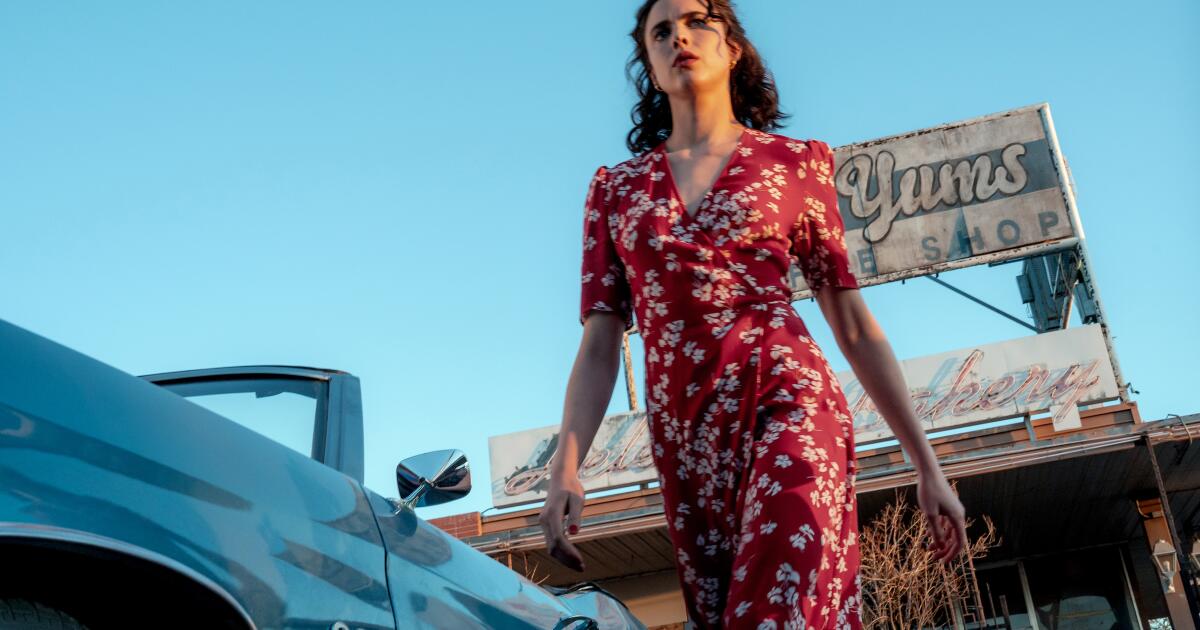Diane Keaton, film legend, fashion trendsetter and champion of L.A.’s past, dead at 79
Diane Keaton, the actress who starred in some of the biggest movies of the last half-century, including the “Godfather” and “Annie Hall,” while serving as a style trend-setter and a champion of Los Angeles’ past, has died. She was 79.
Her death was first reported by People and confirmed by The New York Times.
In an extraordinary run during the 1970s when she was dominant, her career spanned the high points of American cinema: Francis Ford Coppola’s mafia saga and several of Woody Allen’s urbane comedies, climaxing in an Oscar win for her culture-changing turn as the title character in 1977’s “Annie Hall.” Keaton’s catchphrase, “Well, la-di-dah,” became iconic.
Over her career, she received four Oscar nominations for lead actress, winning for “Annie Hall.”
Born in Southern California, Keaton achieved fame in the 1970s through her frequent collaborations with Woody Allen and Francis Ford Coppola. She appeared in three “Godfather” movies as well as eight Allen films. Her star turn as Annie Hall earned her critical raves and made her a fashion icon of the era with Annie’s fedora hats, vests, ties and baggy pants. The Times once called her look “fluttery, vulnerable, almost unbearably adorable.”
“Annie’s style was Diane’s style — very eclectic,” designer Ralph Lauren said in a 1978 story in Vogue, soon after the movie came out. “She had a style that was all her own. Annie Hall was pure Diane Keaton.”
She was often asked if she got tired of the notoriety “Annie Hall” brought her, including the magazine covers, think pieces and fashion homages.
“No, I’m not. Everything is because of ‘Annie Hall’ with Woody. He has a great ear for women’s voices. I’m so grateful to him; he really gave me an opportunity that changed my life,” she told The Times in 2012. “I’m never disappointed about people talking to me about ‘Annie Hall.’ But I will say, a lot of people don’t know ‘Annie Hall’ exists, and that’s just the way it goes — goodbye! It’s bittersweet.”
She managed to capture the cultural zeitgeist in later films. In 1987, she played a successful businesswoman who upends her life to care for a relative’s baby in “Baby Boom.” In 2003, she won acclaim in “Something’s Gotta Give” for playing a successful writer navigating with romance in her 50s.
Keaton also got Oscar nominations for “Reds” (1982), “Marvin’s Room” (1996) and “Something’s Gotta Give.”
Keaton was a patron of the L.A. arts scene and also gained note as a champion of architecture preservation, remaking grand homes across the region. In collaboration with the Los Angeles Public Library, she edited a book of tabloid photos called “Local News” that ran in the Los Angeles Herald-Express.
In a 2018 interview with The Times, she said she felt privileged to still be working.
“I know what I am by now,” she said. “I know how old I am. I know what my limitations are and what I can and can’t do. So if something appeals to me, I’m definitely going to go for it.”
Later in life, Keaton became a major voice in architecture preservation.
She grew up Santa Ana during the post World War II housing boom in the 1950s and told The Times in an interviews she loved going to open houses with her father
“My father took me to see model homes, which I thought were palaces,” Keaton said.
She began buying and fixing up landmark homes around L.A., especially those of the Spanish colonial style.
“You have to get to know a house and try to keep its integrity. I try to honor the architect,” she said. “I love to go into an empty house. You look at the house and start to feel what it might need.”
“There are so many house treasures, unsung gems, all over Los Angeles,” she said.
Explaining how she came to edit the book of L.A. tabloid photos, Keaton told The Times the L.A. city library came up to her at a swap meet.
The librarian said, ‘There’s these files in the basement of the Central Library’ — the most beautiful building. I took a look. There are books and books to be made out of those images. This is a brilliant archive.”
In recent years, Keaton had become a hit on Instagram, posting photos of architecture, fashion and more. In an interview in 2019, she said she was still very active, eager to work and try new things but was also thinking more about her mortality.
“Of course, you think about it. How can you not?” she said. “I mean, I’m 73. How long do you live? It’s really important what those years are like.”
Keaton death brought tribute across Hollywood and beyond.
“She was a very special person and an incredibly gifted actor, who made each of her roles unforgettable. Her light will continue to shine through the art she leaves behind. Godspeed,” said Nancy Sinatra.

